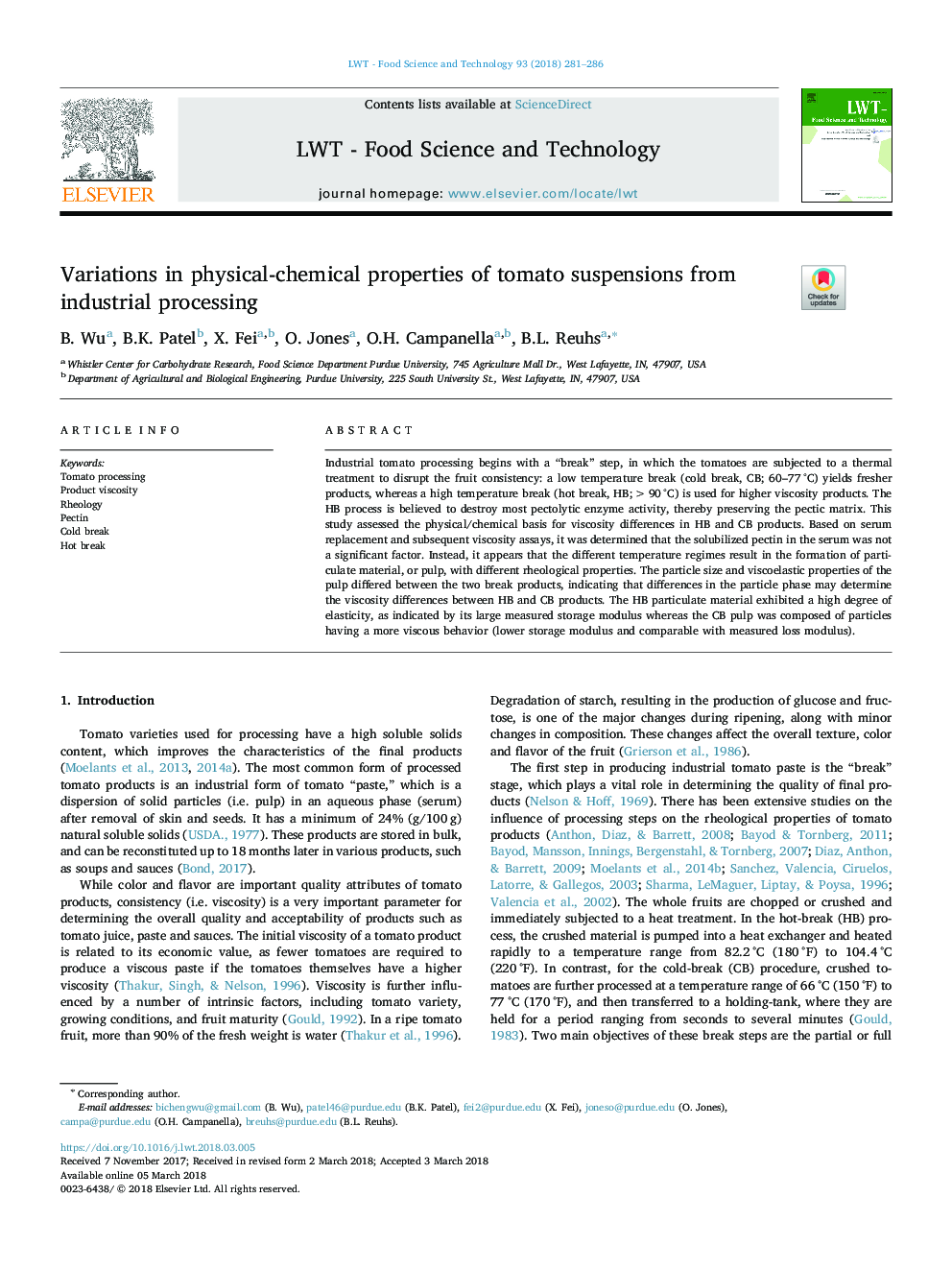| Article ID | Journal | Published Year | Pages | File Type |
|---|---|---|---|---|
| 8890994 | LWT - Food Science and Technology | 2018 | 6 Pages |
Abstract
Industrial tomato processing begins with a “break” step, in which the tomatoes are subjected to a thermal treatment to disrupt the fruit consistency: a low temperature break (cold break, CB; 60-77â¯Â°C) yields fresher products, whereas a high temperature break (hot break, HB; >90â¯Â°C) is used for higher viscosity products. The HB process is believed to destroy most pectolytic enzyme activity, thereby preserving the pectic matrix. This study assessed the physical/chemical basis for viscosity differences in HB and CB products. Based on serum replacement and subsequent viscosity assays, it was determined that the solubilized pectin in the serum was not a significant factor. Instead, it appears that the different temperature regimes result in the formation of particulate material, or pulp, with different rheological properties. The particle size and viscoelastic properties of the pulp differed between the two break products, indicating that differences in the particle phase may determine the viscosity differences between HB and CB products. The HB particulate material exhibited a high degree of elasticity, as indicated by its large measured storage modulus whereas the CB pulp was composed of particles having a more viscous behavior (lower storage modulus and comparable with measured loss modulus).
Keywords
Related Topics
Life Sciences
Agricultural and Biological Sciences
Food Science
Authors
B. Wu, B.K. Patel, X. Fei, O. Jones, O.H. Campanella, B.L. Reuhs,
